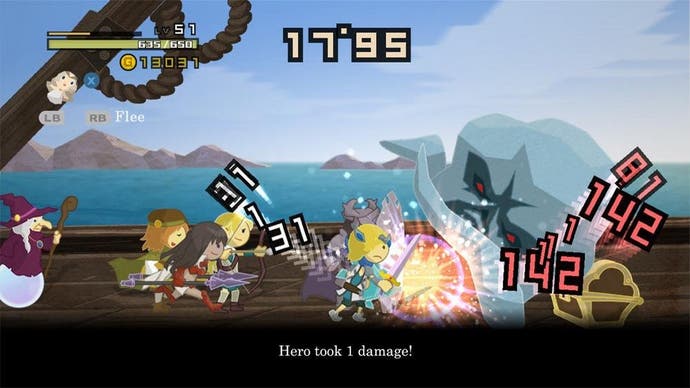Download Games Roundup
Dead! Kirby! Hero! Laser! Proun!
Block the Laser
- Xbox Live Indie Games - 80 Microsoft Points (£0.68)
- Also available on iPhone/iPad (universal binary): £0.59
There really is no room for negotiation with a security laser. No reasoned discussion or protracted argument to get it to soften its stance. If you so much as waft past one, that's it. Foom. Ashes everywhere. Goodnight Vienna.
But harsh mistress that it is, it's not so deadly against walls and mirrors, or at least that's what John Paul D'India's fiendish maze-morphing puzzler would have you believe.
In each of the game's 50 stages, the goal is simple: get your little monocycle webcam robot thing safely to the exit. Getting there, mind you, not so much.

Viewed in good old 1980s-o-vision top-down perspective, you find yourself trapped in a seemingly futile situation, with deadly lasers blocking your path to salvation. But with diligent, logical use of pressure pads in the correct order, you can open and close doors or rotate turnstiles and, guess what? Block the laser.
In typical casual indie game style, it starts off all fluffy and accommodating before eventually shedding its mask of genial conviviality to reveal its cold robot heart.
Before you know it, you're dying the valiant death of the persistently curious and going through the trial-and-error routine until something eventually clicks. Of course, the better you get at the game, the more evil and elaborate the level design becomes, with more pressure pads, turnstiles and mirrors to arrange before you can slip in through the out door.
How many tears must be shed before the lasers are vanquished? A lot. Bring tissues. And 68p.
7/10
Half-Minute Hero: Super Mega Neo Climax
- Xbox Live Arcade - 800 Microsoft Points (£6.80).
When Half-Minute Hero came out on PSP a couple of years back, Simon loved it so much he went to the trouble of importing it before smearing it vigorously with 8/10 man love.
If that sordid image is burning a hole in your face, it's nothing compared to the task of repeatedly saving the world from a series of apocalyptic megalomaniacs.
Rather than simply destroy the world and get on with it, they elect to warn you first and give you 30 seconds to fight through their minion hordes, get to their hideout and lay the smack down.
It's not quite as simple as that, but almost. In your favour, you benefit from the helping hand of a Time Goddess, who can reset the ever-ticking clock in return for cold, hard cash. With a modicum of level grinding and cash accumulation from your random battles, you'll quickly be ready to take down the buffoon behind the world-ending shenanigans.

But no sooner have you squished one nefarious idiot, another one appears in the vicinity, and the whole sorry escapade repeats itself - only with progressively tougher enemies and various obstacles to overcome.
As you go along, you'll often require the assistance of mercenaries, who'll join your fight if you go off and collect an object first. Of course, with time against you, your adventures become a perpetual Benny Hill chase sequence, only without the 1970s lechery.
Anyone who played the original will know that this all sounds exactly the same. So what's changed? Basically, Opus Studio took the opportunity to completely revamp the visuals in a gorgeous new style (purists can opt for the original 8-bit style, if they wish), as well as rework the Evil Lord 30, Princess 30 and Knight 30 modes that subsequently unlock after you've battled through Hero 30.
All told, you're getting an absurd amount of content for your 800 Points, but such is the incessant repetition at the core, you may question whether you really need it. If the answer is yes, then this is unquestionably an instant purchase, but over the long haul its infectious opening gambit doesn't quite sustain.
8/10








